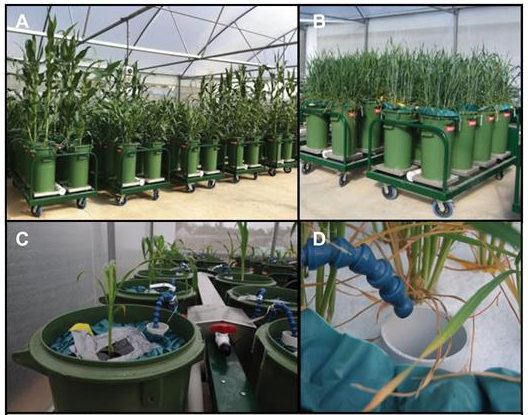Integrating modelling and phenotyping approaches to identify and screen complex traits: transpiration efficiency in cereals
Following advances in genetics, genomics, and phenotyping, trait selection in breeding is limited by our ability to understand interactions within the plant and with the environment, and to identify traits of most relevance to the target population of environments. We propose an integrated approach that combines insights from crop modelling, physiology, genetics, and breeding to characterize traits valuable for yield gain in the target population of environments, develop relevant high-throughput phenotyping platforms, and identify genetic controls and their value in production environments. This paper uses transpiration efficiency (biomass produced per unit of water used) as an example of a complex trait of interest to illustrate how the approach can guide modelling, phenotyping, and selection in a breeding programme. We believe that this approach, by integrating insights from diverse disciplines, can increase the resource use efficiency of breeding programmes for improving yield gains in target populations of environments.

Set-up of a large lysimeter system with a general view of an experiment with sorghum (short and intermediate plants in the picture) and maize (tall plants) (A) and with wheat (B); the watering system (C, D)
Full article can be found here: https://academic.oup.com/jxb/article-abstract/69/13/3181/4883180
